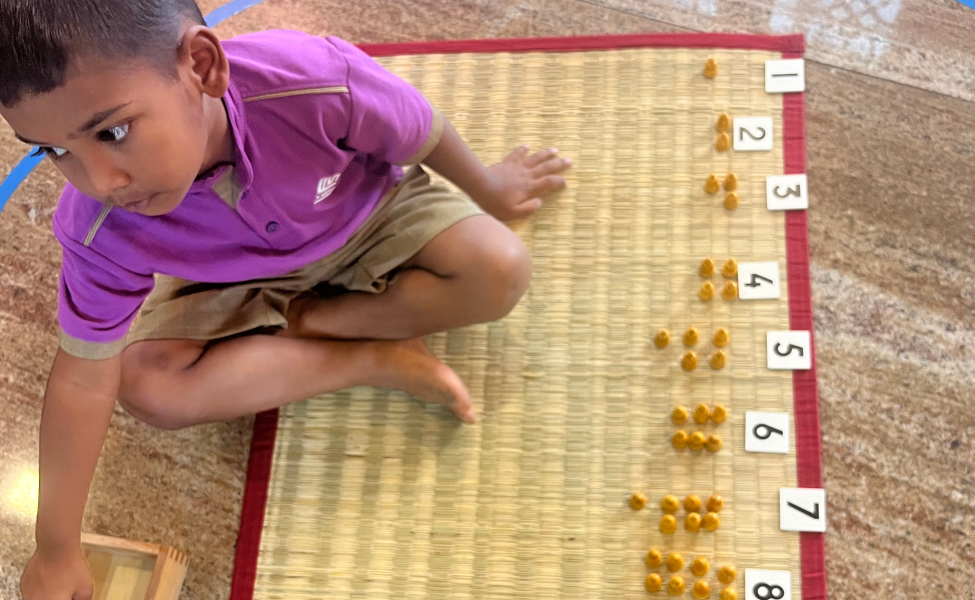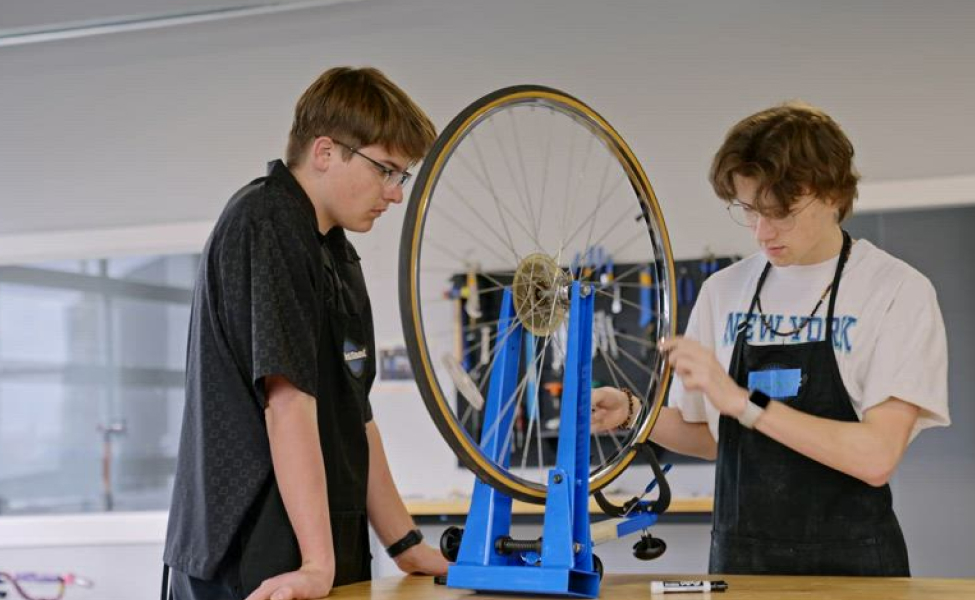Toddlers are naturally curious, eager to explore, and constantly learning from the world around them. One of the most effective ways to support their development is by creating a Montessori environment at home. Based on the principles of self-directed learning, independence, and hands-on exploration, a Montessori-inspired space can foster your toddler’s growth in a nurturing and stimulating way.
In this blog, we’ll guide you through the essential elements of a Montessori environment for toddlers and how you can set up a space that encourages learning, independence, and creativity.
1. What is a Montessori Environment for Toddlers?
A Montessori environment is a thoughtfully prepared space that encourages toddlers to explore and learn at their own pace. Unlike traditional play areas that might be filled with an overwhelming number of toys, a Montessori environment focuses on simplicity, order, and purpose. Every item in the space has a role in helping the child develop skills such as fine motor coordination, problem-solving, and independence.
The key elements of a Montessori environment include child-sized furniture, open-ended toys, easily accessible materials, and a focus on natural and sensory experiences. This environment is designed to allow toddlers to move freely and make choices, empowering them to become active participants in their own learning.
2. Designing a Montessori Space for Toddlers
When creating a Montessori environment for your toddler, the goal is to design a space that is safe, accessible, and promotes independence. Here are the main areas to focus on:
a) Furniture and Layout
- Child-sized furniture: Provide furniture that is sized appropriately for your toddler. This includes low shelves, a small table and chairs, and a child-sized bed if possible. This allows your toddler to move and use the space independently, without needing help from adults to reach or use items.
- Open shelves: Instead of storing toys in bins or closets, place them on open, low shelves that your child can easily access. This encourages your toddler to make independent choices and promotes a sense of order.
- Defined activity areas: Create different zones in the room for various activities, such as reading, art, and practical life skills. This helps your child understand where certain activities take place and makes the space more organized and functional.
b) Safety and Accessibility
- Childproof the space: Ensure the environment is safe for exploration by securing furniture to the walls, covering outlets, and keeping hazardous items out of reach. This allows your child to explore freely without constant supervision.
- Keep everything within reach: Place toys, books, and learning materials at your toddler’s eye level. This encourages autonomy and empowers your child to engage with the materials whenever they choose.
c) Minimalism and Simplicity
- Less is more: Avoid clutter by limiting the number of toys and materials available at one time. Choose items that are purposeful and aligned with your child’s developmental stage. Rotating toys and materials every few weeks keeps things fresh and exciting for your child without overwhelming them.
- Natural materials: Use toys and materials made from natural, tactile substances like wood, cloth, and metal. These materials provide sensory experiences that are soothing and encourage exploration.
3. Montessori Materials and Activities for Toddlers
Montessori materials are designed to support a toddler’s developmental needs, offering hands-on learning that encourages exploration, problem-solving, and independence. Below are some key materials and activities to include in a Montessori environment for toddlers:
a) Practical Life Activities
Practical life activities are everyday tasks that allow toddlers to develop fine motor skills and a sense of independence. These activities can easily be incorporated into your home life and include:
- Pouring water: Provide a small jug and cups for your child to practice pouring water.
- Cleaning up: A small broom, dustpan, and child-sized cleaning tools encourage your toddler to help tidy up their space.
- Self-care: Allow your toddler to dress themselves, brush their hair, and wash their hands using items that are accessible and sized for them.
b) Sensory Play
Sensory play is a vital component of Montessori learning, as it helps toddlers explore the world using their senses. Some ideas for sensory activities include:
- Water play: Offer a shallow basin or bowl filled with water and small cups or spoons for pouring and splashing.
- Texture exploration: Provide materials with different textures, such as smooth stones, soft fabrics, and rough wooden blocks, for your child to touch and explore.
- Sand and rice play: Fill a tray with sand, rice, or beans, and provide scoops, cups, or small tools for your toddler to practice scooping and pouring.
c) Open-Ended Toys
Montessori toys are often simple and open-ended, allowing toddlers to use their imagination and creativity. Some examples of Montessori-friendly toys include:
- Wooden blocks: Simple wooden blocks encourage building, problem-solving, and spatial awareness.
- Stacking and nesting toys: Toys that can be stacked, nested, or arranged in different ways support hand-eye coordination and fine motor skills.
- Shape sorters and puzzles: These help toddlers develop cognitive skills like problem-solving and logical thinking.
4. Encouraging Independence in the Montessori Environment
One of the primary goals of a Montessori environment is to foster independence. Here are some tips on how to encourage your toddler to be self-reliant in their space:
- Allow choices: Offer your child simple choices, such as which book to read or which activity to engage in. This helps develop decision-making skills and gives them a sense of control over their environment.
- Involve your child in daily routines: Let your toddler participate in everyday tasks such as setting the table, getting dressed, or watering plants. These activities build confidence and self-sufficiency.
- Use positive reinforcement: Praise your child’s efforts to be independent, even if they don’t get it right the first time. Encouragement goes a long way in motivating your child to keep trying.
5. Supporting Emotional and Social Development
The Montessori environment also focuses on emotional and social development, helping toddlers learn how to express themselves, interact with others, and develop empathy. Here’s how you can support your child’s emotional and social growth:
- Encourage emotional expression: Help your child name and understand their emotions by discussing feelings openly and empathetically. For example, if your child is frustrated, you can say, “I see you’re feeling frustrated because the puzzle piece doesn’t fit. Let’s try again.”
- Model appropriate behavior: Toddlers learn by observing adults. Model calm, respectful communication and problem-solving when interacting with your child and others.
- Provide opportunities for social interaction: Playdates, group activities, and outings to the park allow your child to interact with other children, practice sharing, and learn how to navigate social situations.
6. Creating a Montessori Routine
Montessori environments thrive on consistency and routine. Establishing a daily routine can help toddlers feel secure and understand what to expect throughout the day. Here’s an example of a Montessori-inspired daily routine for toddlers:
- Morning: After breakfast, allow your child to choose a practical life activity (e.g., pouring water, helping clean up).
- Mid-morning: Engage in a hands-on activity like a puzzle, sensory play, or art project.
- Outdoor time: Spend time outdoors exploring nature, practicing physical skills like climbing or running, or gardening together.
- Afternoon: After lunch, incorporate some quiet time with reading or a nap, followed by another choice-based activity.
- Evening: Involve your child in the evening routine, such as helping set the table for dinner or choosing pajamas for bedtime.
Conclusion: Empowering Toddlers Through a Montessori Environment
Creating a Montessori environment for your toddler offers a wonderful opportunity to nurture their natural curiosity, independence, and love for learning. By thoughtfully designing a space that encourages exploration and self-directed activity, you can support your child’s development in a holistic, meaningful way. Montessori principles not only help toddlers grow academically but also emotionally and socially, setting the foundation for a lifetime of confidence, creativity, and joy in learning.
With a Montessori-inspired home environment, you’ll witness your toddler’s capabilities unfold as they gain the skills needed to navigate their world with independence and enthusiasm.



